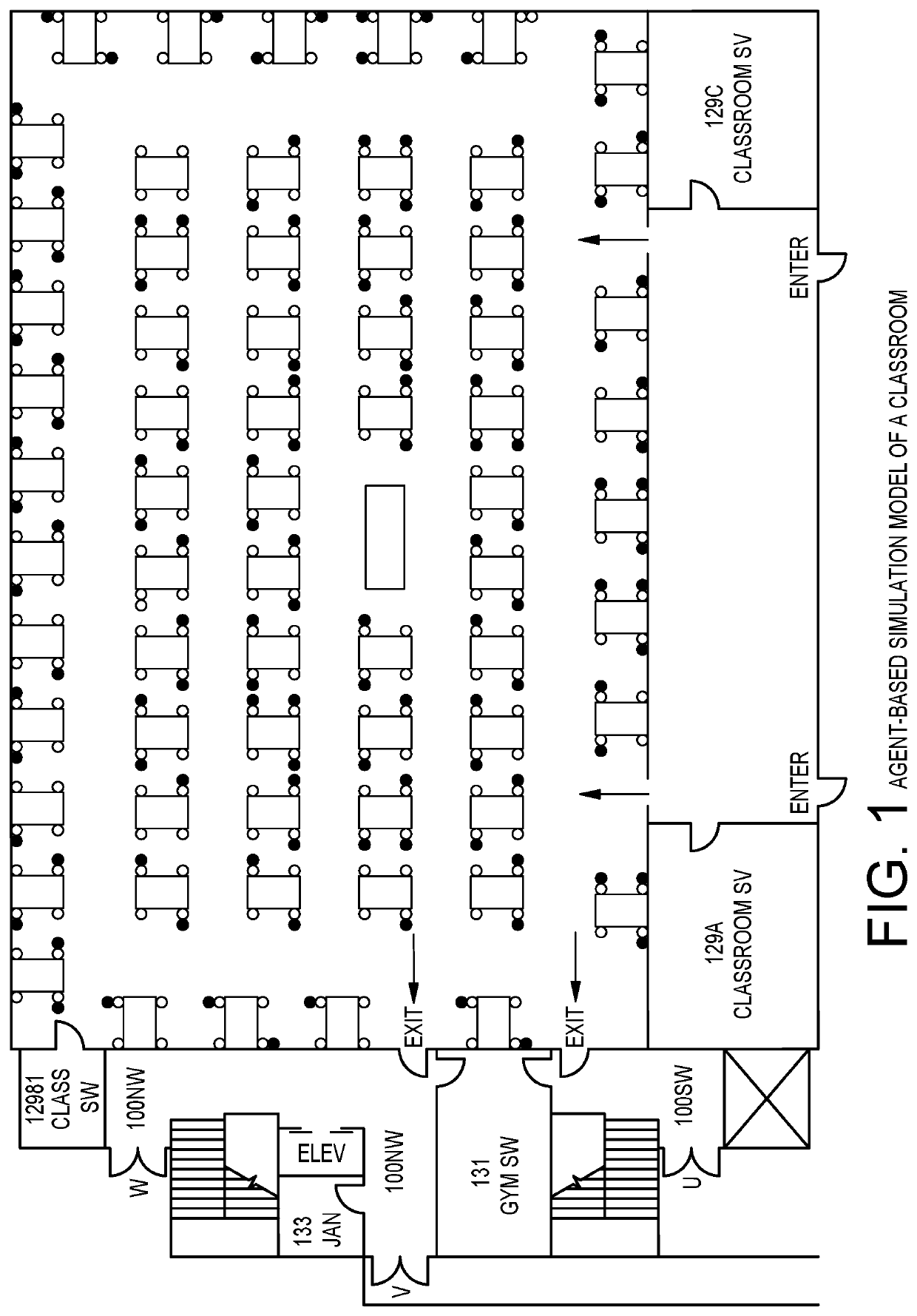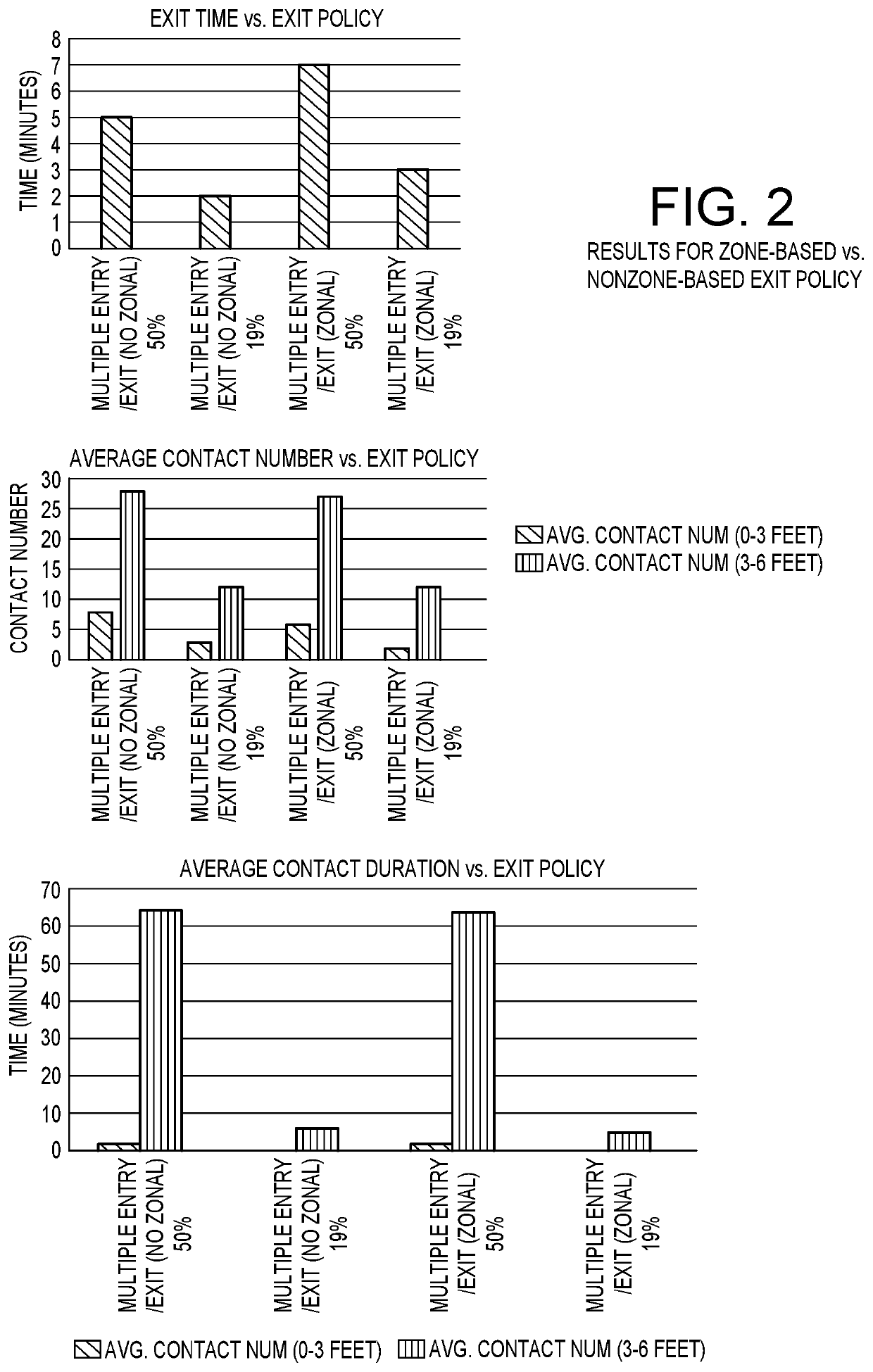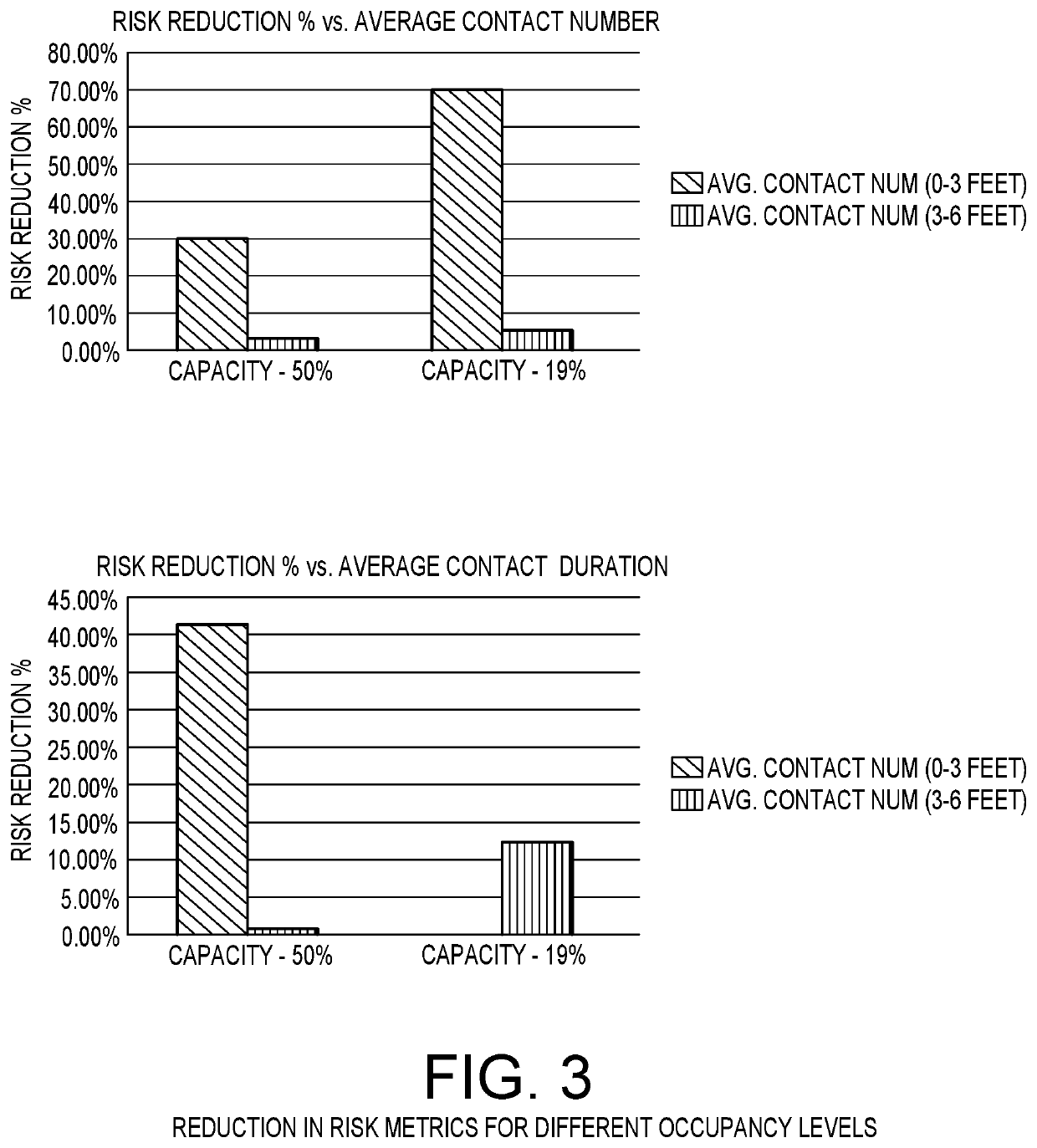Systems and methods for predictive modeling of people movement and disease spread under covid and pandemic situations
a technology applied in the field of systems and methods for predictive modeling of people movement and disease spread under covid and pandemic situations, can solve the problems of difficult real-time detection, difficult management of disease transmission, contact tracing, etc., and achieve the effect of reducing the risk of disease transmission
- Summary
- Abstract
- Description
- Claims
- Application Information
AI Technical Summary
Benefits of technology
Problems solved by technology
Method used
Image
Examples
example 1
[0148]In ENGR Room 301, Size 714 sf×8.3 f, Mon, 8:00-8:50, 4 agents are in this classroom taking a class. By the end of class, at the time point agents are leaving, infectious risk are calculated. Agent A in Pre-symptomatic State, 1 day before symptom onset (viral shedding rate 102 / m3), not wearing a mask (Particle left=1). Agent B in Susceptible State, wearing a mask (Particle left=0.3), have contacted in 0-3 feet (d1=0.243) with agent A, C (C1=2), the cumulative contact time in 0-3 feet is 4 minutes (T1=4); have contacted in 3-6 feet (d2=0.081) with agent A, C, D (C2=3), the cumulative contact time in 3-6 feet is 6 minutes (T2=6).
[0149]The Droplet infectious risk for Agent B is:
pAgentBdroplet=1-exp[-3.78×10-6×(102×1)×0.3×(22+3×0.243×4+32+3×0.081×6)]=0.0001
[0150]The Airborne infectious risk for Agent B is:
pAgentBairborne=1-exp[-0.8×(16×13.62×167.81×(1-13.62×0.83)×(1-exp(-3.62×0.83)))×0.83×0.3]=0.0033
[0151]The total infectious risk p for Agent B is...
PUM
 Login to View More
Login to View More Abstract
Description
Claims
Application Information
 Login to View More
Login to View More - R&D
- Intellectual Property
- Life Sciences
- Materials
- Tech Scout
- Unparalleled Data Quality
- Higher Quality Content
- 60% Fewer Hallucinations
Browse by: Latest US Patents, China's latest patents, Technical Efficacy Thesaurus, Application Domain, Technology Topic, Popular Technical Reports.
© 2025 PatSnap. All rights reserved.Legal|Privacy policy|Modern Slavery Act Transparency Statement|Sitemap|About US| Contact US: help@patsnap.com



